With National Hospital Week occurring from May 12-18, 2024, healthcare providers are once again given the opportunity to reflect on recent strides in healthcare delivery. In particular, in-hospital CPR has advanced tremendously, thanks in part to guidance from the International Liaison Committee on Resuscitation (ILCOR).
ILCOR defined 10 steps to improve clinician education and, by extension, in-hospital cardiac arrest outcomes and quality of care. Here's an overview of each step.

1. Build and Support Infrastructure for Resuscitation Programs
Administrative leadership must commit to advancing resuscitation quality of care. Delivering quality resuscitation care requires governance that incorporates structures and processes to create an effective system of resuscitation care, such as appropriate equipment and evidence-based protocols.
Local operational champions can lead resuscitation programs, obtain resources and ensure other healthcare professionals receive proper training. Champions may also lead quality improvement efforts to ensure the delivery of high-quality CPR.
2. Collect Data to Measure Resuscitation Processes
Measuring various factors associated with CPR delivery is essential to improving resuscitation quality and outcomes. At a minimum, healthcare facilities should collect data to evaluate staff education and training, performance and outcomes.
Collecting data helps determine the effectiveness of CPR performance while also identifying areas for improvement. Each hospital should determine what data to collect based on its resources and needs, which may differ from those of other facilities.
3. Offer Effective Resuscitation Education and Training
Resuscitation education programs should be evidence-based while suiting learner needs. Research suggests a low-dose, high-frequency approach to training helps learners retain knowledge and skills, but leadership must support learners with appropriate resources. This may include learning stations, physical space to practice and allocated time for learning. Also, individual feedback for learners can help them reflect on their performance and identify areas for improvement.
4. Establish Treatment Goals Early and Reassess Often
Healthcare professionals should take a proactive approach to treatment goals. Some people may not want resuscitation, or resuscitation efforts could result in an unacceptable outcome. Clinicians should make every effort to discuss realistic goals for patient care but should also be mindful that these goals may change over time.
5. Curb Preventable In-Hospital Cardiac Arrest
Hospitals should develop early warning systems to help predict, identify and respond to patients who deteriorate quickly. In one study, 25% of in-hospital cardiopulmonary arrests were preventable.
Early warning systems include rapid response teams who have clear communication methods to ensure the care plan is followed and the patient is safely transitioned to the next level of care. While not all in-hospital cardiac arrests are preventable, stopping those that are is key to saving more lives.
6. Deploy a Resuscitation Response System
An effective hospital-wide resuscitation response system typically includes a preassigned and experienced team of interdisciplinary clinicians. Following sudden cardiac arrest, immediately activating this team to provide advanced life support is critical. Leadership should support team members through training opportunities, mentorship and empowerment.
7. Deliver Guideline-Based Resuscitation Care
Resuscitation care should focus on evidence-based guidelines for basic life support, advanced life support and pediatric life support. Specialized training devices that provide real-time feedback can help team members practice their skills while reinforcing their knowledge using the most up-to-date practices possible.
8. Deliver Guideline-Based Post-Cardiac Arrest Care
Clinicians should be prepared to deliver evidence-based post-cardiac arrest care, which begins as soon as spontaneous circulation returns. Healthcare providers from various disciplines should be involved to address the different recovery components and help care transition beyond the intensive care phase. If necessary, palliative care and organ donation specialists should be involved according to the patient's wishes and clinical context.
9. Implement a Patient-Centered Culture of Excellence
Patients should always be at the center of all treatment plans and goals. Clinicians should develop post-discharge plans that include resources the patient will need to recover. When developing such plans, clinicians should use informed, culturally competent language to support the patient's preferences, goals and values.
10. Ensure Healthcare Professionals' Well-Being
Hospitals should also focus on healthcare providers' well-being. Delivering in-hospital CPR can be emotionally and physically taxing, and unfavorable outcomes may cause additional stress or burnout.
Debriefings after in-hospital cardiac arrest events can help local champions evaluate individual clinicians and take action to ensure provider well-being. Other support methods, like coaching and mentorship, can also help healthcare providers cope with the reality of in-hospital cardiac arrest.
Focusing on Staff Education and Training
Implementing ILCOR's 10 steps can help healthcare providers and organizations improve in-hospital CPR quality while also identifying areas for improvement. When it comes to training clinicians, a low-dose, high-frequency approach to education with real-time data and feedback can help improve CPR quality.
As opposed to traditional biennial CPR training, the Resuscitation Quality Improvement (RQI) Program's quarterly education model helps users' skills stay sharp and boosts their confidence. Developed in partnership with the American Heart Association and Laerdal Medical, RQI is creating a new standard of care by shifting resuscitation practice from compliance to verified CPR competence.








